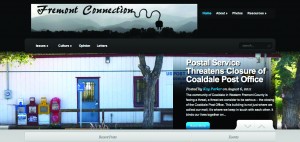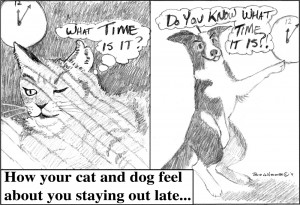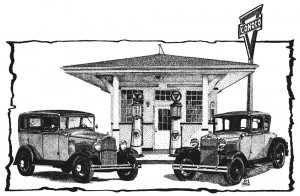By Jennifer Dempsey
Forty-eight years ago, Hunter Doherty Adams vowed never to have another bad day in his life.
He was 18 and had been hospitalized for his third suicide attempt. During his stay in the psychiatric ward, Adams had the revelation that there must be a better way to respond to a world that seemed cold and uncaring than to try to leave it.
So he started clowning and the legend of Patch Adams, Clown-Doctor, was born, immortalized by Robin Williams in the 1998 film “Patch Adams.”
“I decided at that moment to be disgustingly happy all the time and to serve humanity through medicine,” the 66-year-old said in a recent phone interview. “I am a trickster, a buffoon, a clown. I am a clown who is a doctor, not a doctor who is a clown. I am an extreme extrovert. I clown to get love close. I can invade people’s spaces as a clown. I have been ragingly naughty, radically subversive, every day of my adult life.”
His subversive clowning tactics have included using fake dog doo, whoopee cushions, rotten dentures, fake snot and ‘mooning for peace.’ One of his more outrageous pranks is to invite people – including the Presidents of Mexico and Costa Rica – to join him in what he calls “the world’s largest pair of underpants.” For almost five decades, clowning – the art of play – has been for Adams a political weapon, a survival mechanism and a spiritual calling.
“If by spirituality you mean love-in-action, then yes, clowning is my spirituality,” he said. “I went out and engaged with the world and fell in love with humanity. They want to connect. It’s bullshit that greed or suspicion is human nature. That is just the consequence of a society that values greed and power over love. My work is peace and justice and to end market capitalism. The ultimate goal is to move a 5,000 year old global value system based on power and money to compassion and generosity.”
Using medicine as his vehicle for social change, Adams is the visionary behind the Gesundheit! Institute, a healthcare system based on compassion, intimacy and love. In the early 70s, Adams and a group of friends opened a hospital in Virginia as a pilot project. The hospital offered care free of charge, accepted no third party reimbursement and had no medical malpractice insurance. Intake interviews were 3-4 hours long and all healing arts were welcome. Over 12 years they saw 15,000 patients. In 1982 it closed its doors to devote time to fund raise for a large-scale model of the Institute.
Gesundheit!
On his website www.patchadams.org, Adams describes the principles of the Institute: “Care will be based on the principles of compassion and friendship. The well-being of the staff will be as important as the well-being of the patients. All manner of complementary care will be practiced. The atmosphere will be infused with fun. We want to eliminate the idea of debt in the medical interaction as a way to begin recreating human community. We don’t want people to think they owe something, we want them to think they belong to something. We have nothing to do with malpractice insurance, which forces fear and mistrust into every medical interaction. We espouse the politics of vulnerability and are clearly aware that we can only offer caring and never promise curing. In such a flagrantly imperfect science, we need the right to make mistakes.”
“When I started in 1971, I thought we were going to build in four years, but imagine trying to raise money in the U.S. for a hospital that refuses to carry malpractice insurance,” he said.
“We’re in our 41st year and last month we broke ground on the first big building. Just now in our maturity we’re getting the kind of interest we need. If you listen to the healthcare reform meaningless discussions, you don’t hear any ideas for slowing the inflation. The only thing you hear is people trying to cut care.”
Bi–directional care
“A secret in the practice of medicine is how care is bi-directional, meaning intimacy is as important for the caregiver as it is for the patient,” he writes. “In such a context, the well-being of the staff is as important as the well-being of the patients. The bi-directionality of healing is at the core of preventing burnout.”
“We’ve picked the most expensive thing in this country and want to give it away for free by eliminating 90% of cost,” he said. “The most dramatic way to do that is to eliminate the hierarchy and have the surgeon and the cleaning person make the same salary. I have unlimited doctors and nurses willing to work for $300 a month. We know how to have a fully operational hospital at 10% of the cost with an ecstatic staff and patients.”
On the road 300 days a year, Adams has enrolled hundreds of thousands of people in his vision of compassionate health care through lectures, conferences, medical student electives, summer institutes, healthcare system design intensives and humanitarian clowning missions. More than 5,000 people have accompanied Adams on clowning missions to orphanages, schools, psychiatric wards, nursing homes and hospitals in more than 60 countries including Afghanistan, Peru, Russia, Cambodia, El Salvador and Ecuador.
“We use clowning to show medical students compassion,” he said. “No medical school teaches compassion. Clowning helps people reconnect with their loving self. Many people who go on the compassionate clowning trips say they discover their loving self, their goofy self, their engaging self. They discover how much they love relieving suffering. I go to the worst suffering and love it. Love is not only a feeling, it’s an intelligence. I’ve seen a huge amount of hell but I take the same spirit to the businessman in London as I do to impoverished children. It feeds me to give care to everyone, everywhere. Come on a clown trip and you discover there aren’t any ‘others;’ you discover the ‘we.’”
Time and Attention
“The business of medicine has connected the word “care” with the concept “burden,” he writes. “(But) we found the unencumbered practice of medicine is an ecstatic experience for patient and caregiver alike. The loudest cry of patients is for compassion and attention, which is a call for time. So initial interviews with patients are three to four hours long, so that we can fall in love with each other. In spending this amount of time with patients, we found that the vast majority of our adult population do not have a day to day vitality for life, which we would define as good health.”
“Depression is a symptom of loneliness,” he said. “You cannot be thinking of a friend joyfully dancing in your head and be depressed. Pharmaceutical companies convince us that depression is an illness so they can make multimillion dollar profits on drugs.”
“What the majority needs is an engagement with life,” he writes. “Intimacy is the greatest gift we can give patients, especially at a death bed, with intractable pain or chronic, unsolved medical problems.”
“We all have two states,” he said. “We are either living or dead. Death is not important, it is inevitable. What matters is how we live.”
“I’m fun to die with,” he added.
For more information about the Gesundheit! Institute go to www.patchadams.org
Jennifer Dempsey is director of the Salida Circus and a freelance writer.




